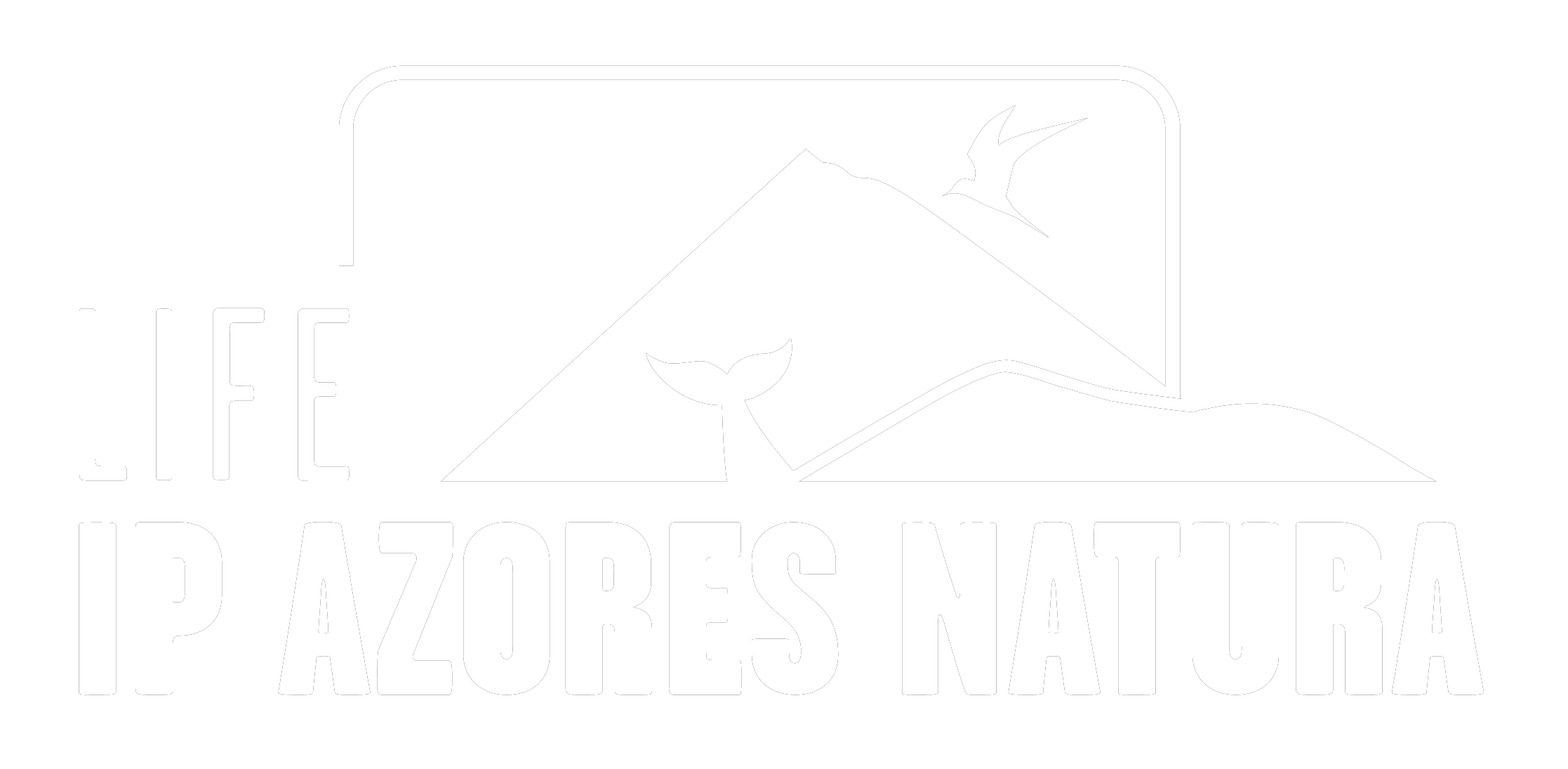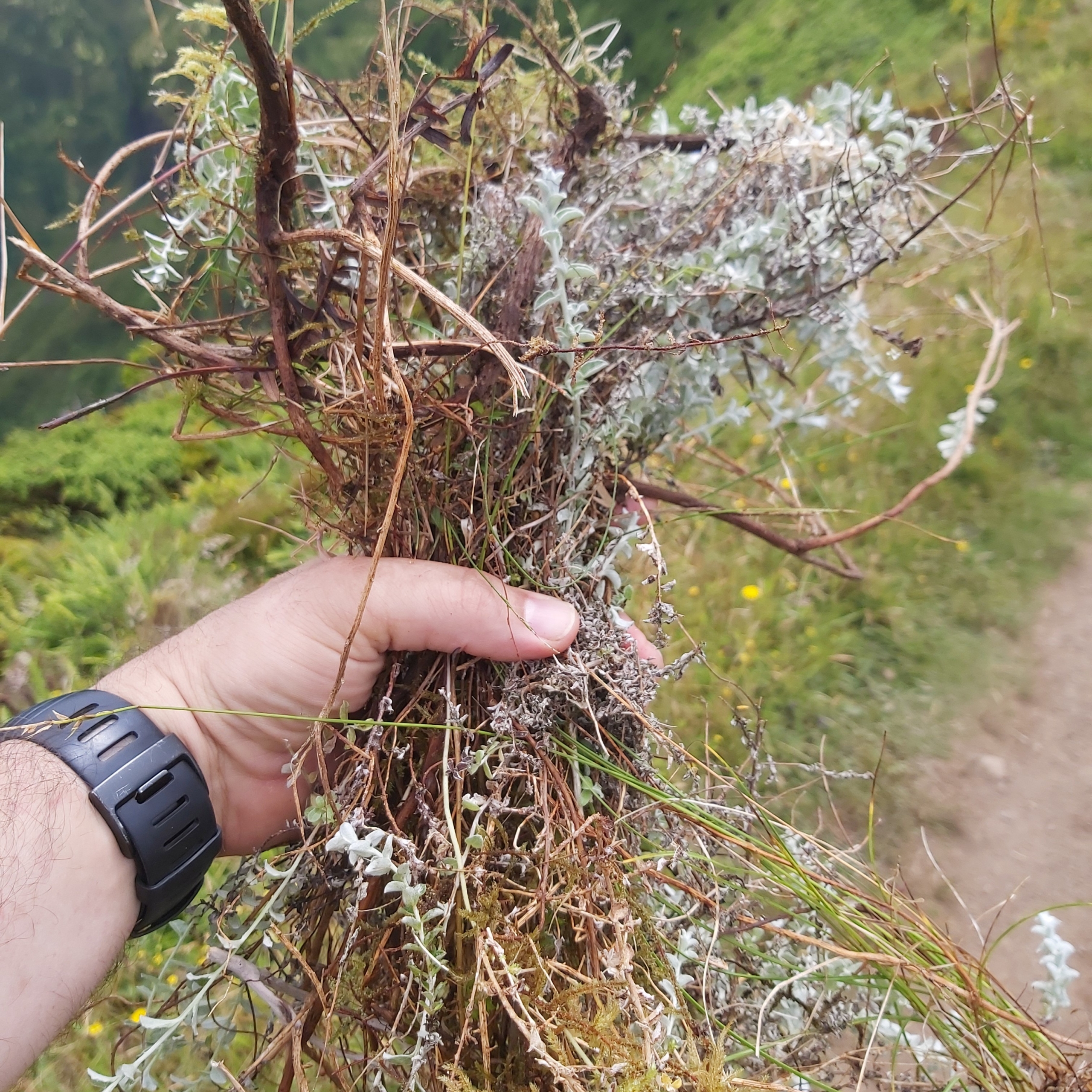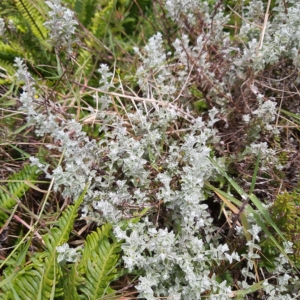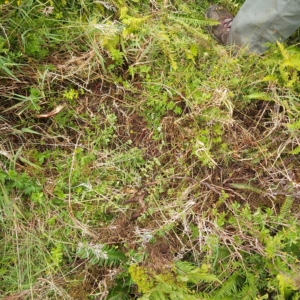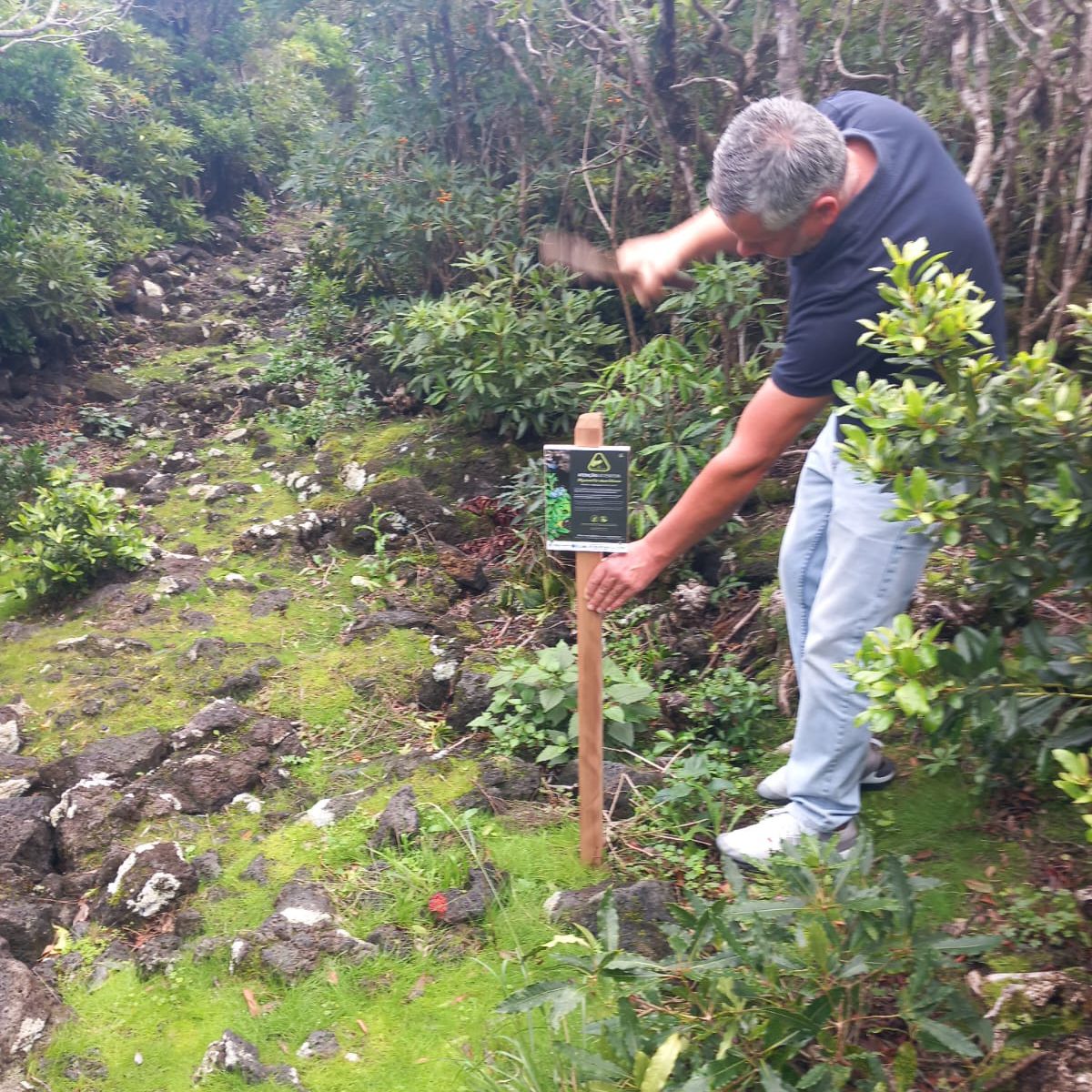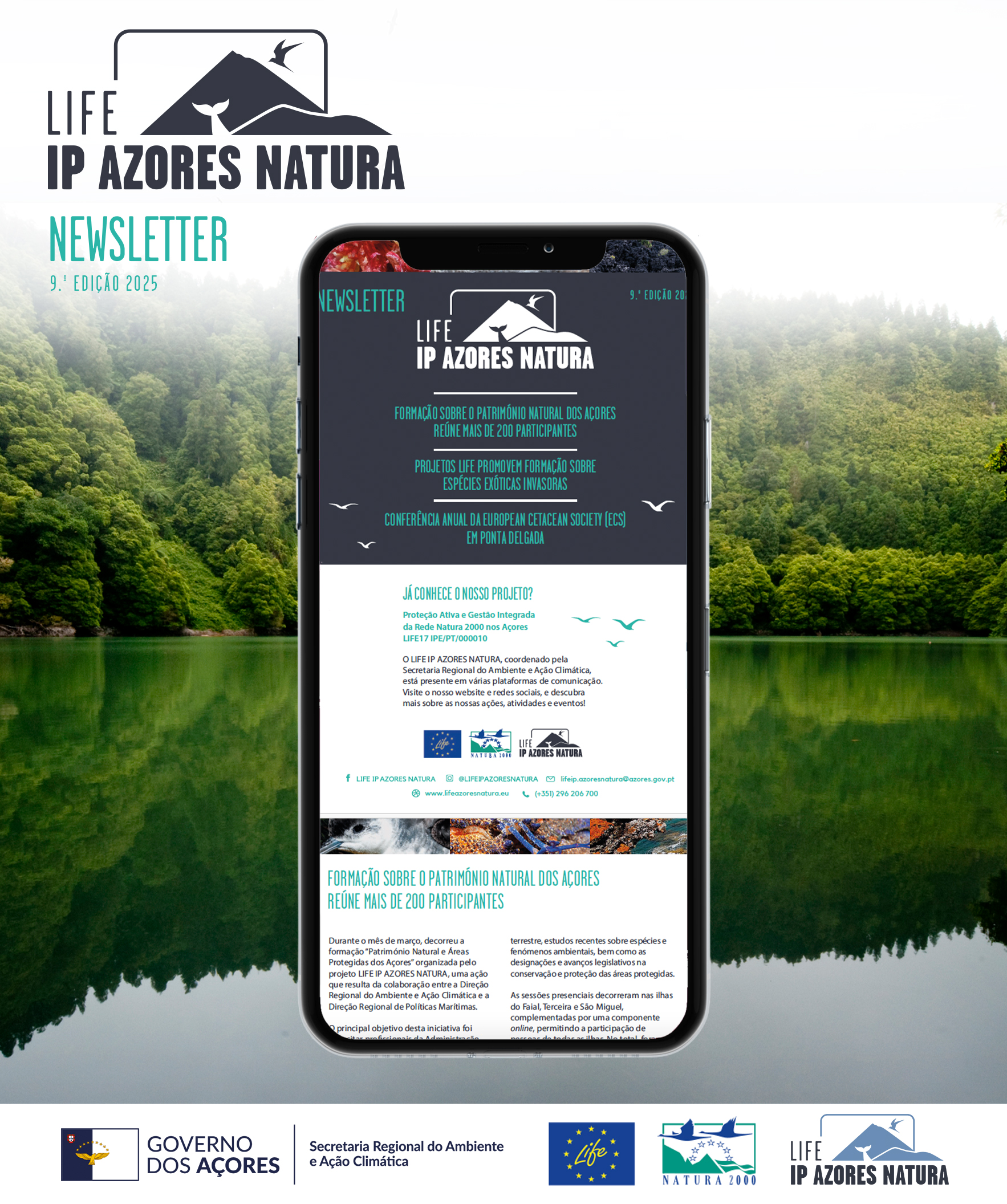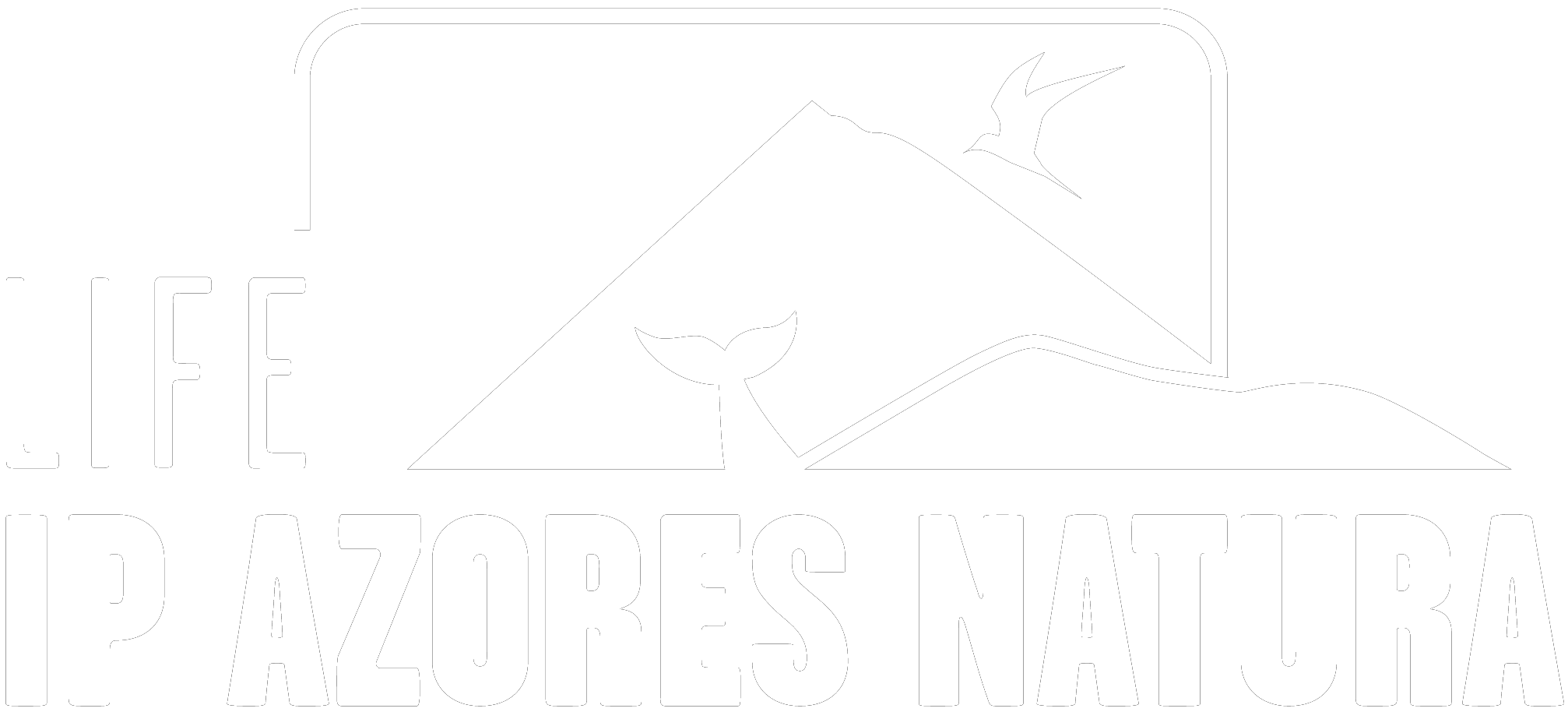As part of the LIFE IP AZORES NATURA project, the invasive species Plecostachys serpyllifolia was recently detected in Caldeira do Faial during a field trip by a researcher from the University of the Azores.
This species, already known for its invasive behaviour on the island of Corvo, poses a threat to the biodiversity of natural ecosystems, forming dense masses that restrain the development of native and endemic flora. According to records from the iNaturalist platform, this is the only occurrence identified on the island of Faial to date, which reinforces the importance of this early warning.
In response to this detection, members of the Faial Environment and Climate Action Service and the Regional Directorate for Environment and Climate Action immediately took coordinated action, visiting the site to verify and manually remove the detected plants at an early stage of their spread. The affected area was small, which allowed for effective intervention, minimising the risk of dispersal.
The area will be regularly monitored to detect any sprouts or new occurrences, ensuring that this species does not establish itself in Caldeira, one of the most emblematic places on the island of Faial.
This case also reinforces the essential role of citizen science in combating invasive species. Platforms such as iNaturalist enable any citizen, resident, or visitor to record observations of species and contribute to the knowledge and early detection of potential threats. The involvement of civil society, in coordination with the scientific community and public authorities, is crucial to ensuring a rapid and effective response.
